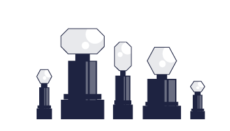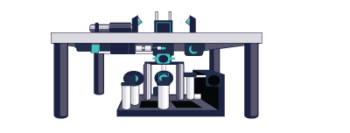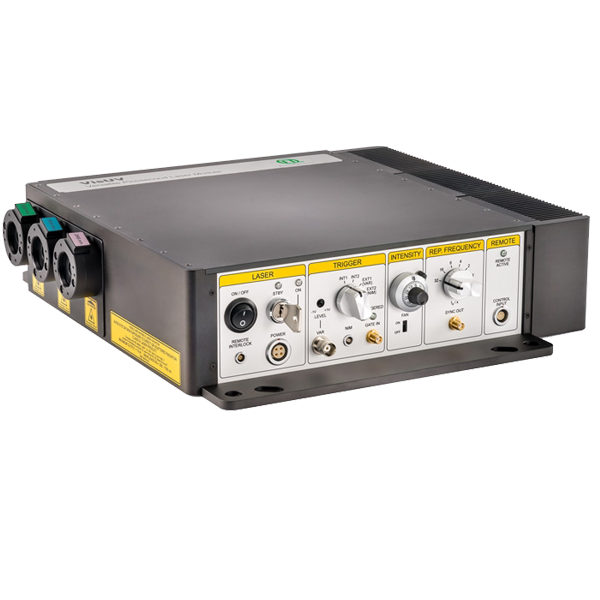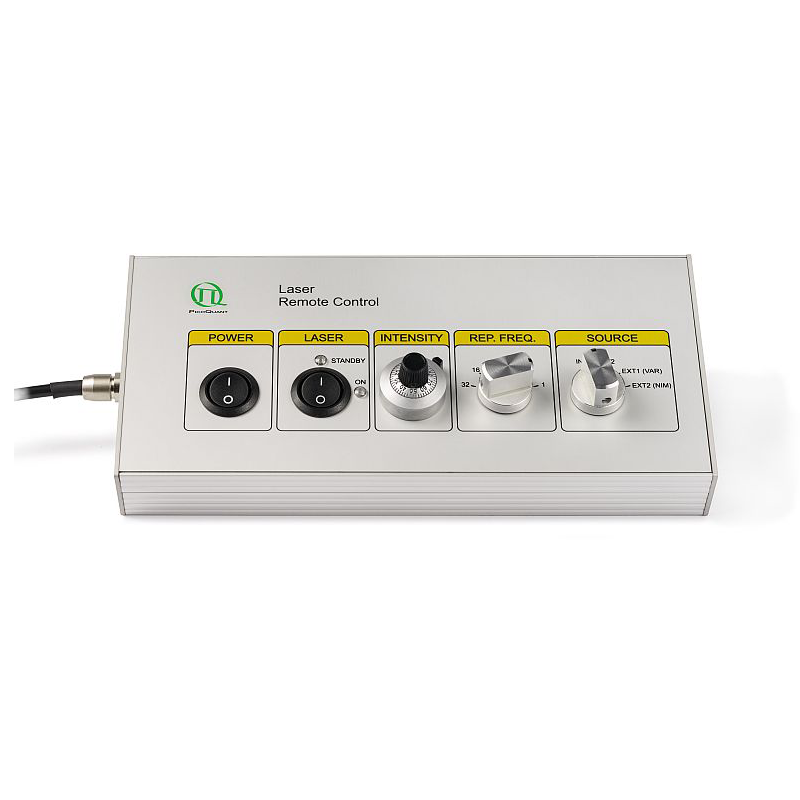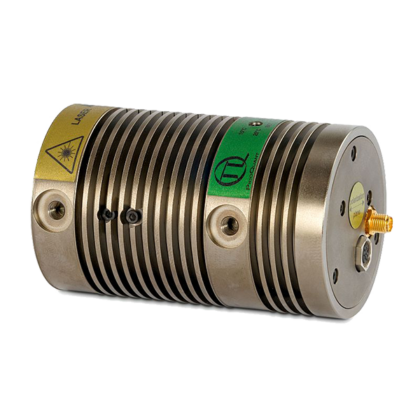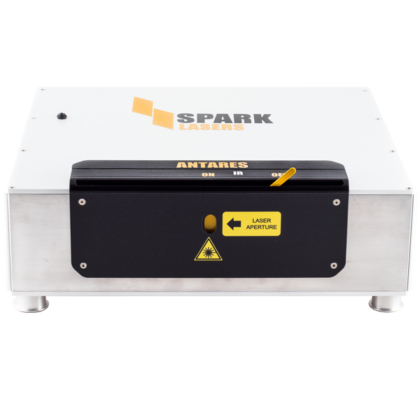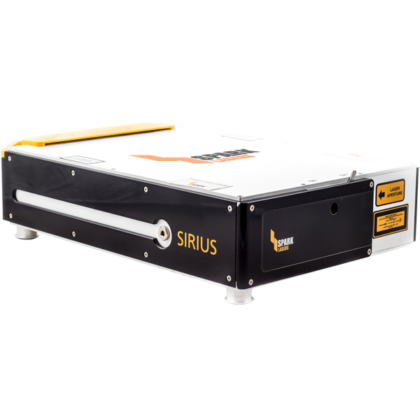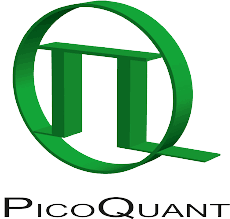Picosecond Lasers
- Enhanced power values at 280 and 295 nm
- UV wavelengths 266, 280, 295, 355 nm
- Vis wavelengths 532, 560, 590 nm
- Pulse width <85 ps (FWHM)
- Repetition rates from single shot up to 80 MHz, external or internal triggering
- Collimated output, optional fibre coupling
The VisUV picosecond laser is a versatile and flexible platform based on a Master Oscillator Fibre Amplifier (MOFA) concept with frequency conversion. The master oscillator generates infrared picosecond pulses at 1064 nm with variable repetition rates up to 80 MHz using the proven gain-switching techniques from PicoQuant. The output of this seed laser is directly connected to a multi-stage fibre amplifier, which boosts the output from the seed laser by several dB while maintaining the other characteristics of the seed laser beam like the emission wavelength, polarisation and the pulse width.
Flexible wavelength configuration
The high pulse energies of the amplified 1064 nm infrared laser permit efficient wavelength conversions. In that way it is possible to generate picosecond pulses at 266, 280, 295, 355, 532 nm with average optical power values ranging from sub mW up to 750 mW depending on the wavelength and power version. Any wavelength is available individually or in combination with one or two other wavelengths. Each wavelength is emitted from a separate beam output equipped with an individual shutter.
Flexible repetition rate
The VisUV can be operated at 12 different internally selectable repetition rates between 31.25 kHz and 80 MHz and can also be triggered externally by TTL or NIM signals at any repetition rate between single shot and 80 MHz.
Excellent beam quality
The VisUV features nearly perfectly circular and gaussian shaped beam profiles (TEM00) and M² values down to 1.02 at some wavelengths.
Remote control Compact stand alone device
The VisUV picosecond laser is a stand alone device with a special design optimised for maximum heat dissipation. It includes all driving functions of the established PDL series laser driver such as choice of repetition rate and trigger source. An optional remote control for the VisUV allows to set the trigger source, the repetition rate, and the general output power of the laser.
Fibre coupling
Exception made below 355 nm, the beam output of the VisUV can be optionally coupled into a variety of optical fibres (multi-mode, single mode, or polarisation maintaining single mode) via different connector types. We recommend FC/APC connectors for most applications, since they prevent back reflections that can interfere with laser stability.










